The BMW X5 has long been one of the most desirable and entertaining SUV’s on the market — handsome styling, a quality cabin and powerful engines are all X5 trademarks, and the current generation doesn’t fail to impress.
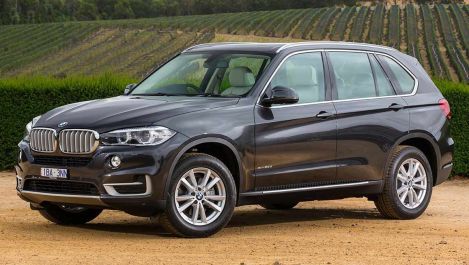
This model (designated F15 in BMW speak), was first launched back in 2013 and initially gained criticism for being softer and less sporting than previous generations. I was amongst those who weren’t all too fond of this more generic looking exterior (although I couldn’t pass judgement on the driving experience), but time has shown the F15 to be a well rounded X5 that has lots of appeal.
Exterior
Although it is based on the same platform as the previous generation, the current X5 has grown a fair bit — this is to allow the X3 to continue to grow in size, but it’s likely that BMW will add a larger X7 model above the X5 in the next few years.

That said, the BMW hides its bulk very well, with styling cues shared with other newer models from the brand, such as headlights that meet an enlarged kidney grille, and LED everything. There’s still the trademark hofmeister kink in the window line too, and although not as muscular as before, the X5 is still an imposing and beefy looking car.
However the important thing is to remember to specify the M-Sport package, or at least 19-inch or 20-inch wheels — the larger dimensions of the current X5 mean that the standard 18-inch wheels on SE models look woefully undersized. The M-Sport gets 19-inchers, but it’s only the large 20-inch ones really look right, just make sure they don’t get curbed!
Interior
Inside the BMW X5, it’s business as usual — the majority of interior parts and the design are shared with lots of other models in BMW’s line-up. On the whole this is a good thing, as everything falls to hand easily and you can rest assured that quality is of a high standard, although there’s always the option to get leather covered everything.
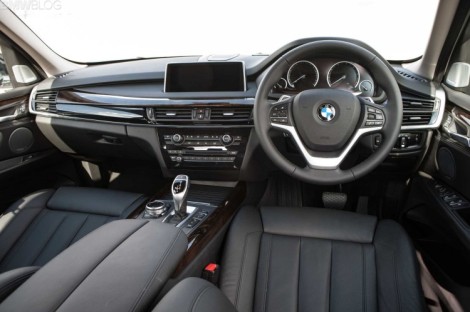
The iDrive infotainment system is also pretty unbeatable in terms of slickness and ease-of-use. A large touchpad dial is used to control the large central screen (which is mounted sticking out of the dash), and the whole experience mirrors the premium quality of X5 ownership.
The only negative is that a lot of the switchgear and design is also found on BMW’s cheaper models, which could be slightly annoying if you’re shelling out nearly £100k on an X5 M, and your stereo is the same as a £20k 1 Series.
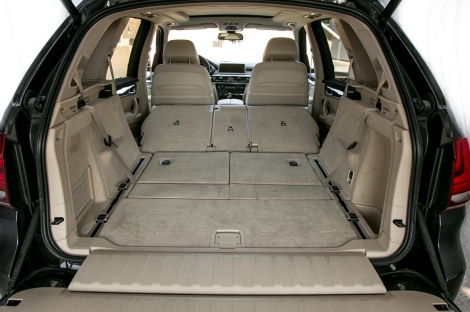
Practicality is good though, and the X5 retains the split tailgate design that is so beloved of Range Rover owners. The top half is now powered as standard (the RR has both parts powered), and opening it reveals a 650-litre boot space…on a par with rivals and a good shape. Passenger space is also good, and there’s plenty of cubbies and storage spaces for kids.
Those wanting a seven seat X5 are in luck, as this generation is the second to be offered with a pair of rear seats which fold into the boot as a £900 option. The seats are not the most roomy though, and if you’re looking to seat 7 regularly, then you’d be better off looking at a Volvo XC90, Mercedes GLS or even the Audi Q7.
Driving
Traditionally this is where the X5 and indeed BMWs in general have excelled ahead of competition, but as I mentioned earlier, when the F15 generation car was launched, it was criticised for being less sharp and generally less fun than both previous models.
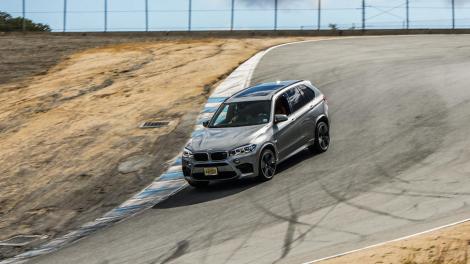
However the X5 remains one of the best vehicles in the class to drive, but now just comes across as a more cosseting vehicle, perhaps befitting of the £60k luxury cat it has morphed into. Electric power steering means a little less feedback, but in all honesty most buyers are not going to notice the difference unless they really push the car hard.
Ride quality, on the whole, has improved. The previous generation X5 often faced harsh criticism for an unforgiving ride when optioned with M-Sport wheels and suspension — partly this was due to the standard fitment of run-flat tyres, but despite those remaining, suspension comfort in general has improved. It’s no Range Rover, but it does drive more like a saloon than the Range Rover and most rivals this side of a Porsche Cayenne.
Engines
Normally I would tack any engine information into the driving section, but the X5 has quite a comprehensive range and as such it deserves a more in-depth analysis. The majority of buyers in the UK market will choose a diesel model, and as such here they offer 4 of them, plus 2 petrol options and now a plug-in hybrid.

The diesel range starts off with a 2.0-litre 4-cylinder named the 25d. It currently produces 231hp, an amazing figure for such a small engine, especially considering that my X5 has a 3.0-litre diesel engine and only produces 218hp. The 25d comes in either sDrive or xDrive (s being rear-wheel-drive, x being four-wheel-drive), and sprints from 0-60mph in a very impressive 7.7 seconds.
All other diesels are only xDrive, and are based around the same classic 3.0-litre inline 6-cylinder. The 30d is the most popular UK engine, and currently produces 258hp. The 40d has 313hp, and the M50d has an amazing 381hp. 0-60mph times for the 3.0-litre diesels are 6.8, 5.9 and 5.3 seconds respecitively.
If you prefer pure petrol power then you ‘have’ to make do with one of two 4.4-litre V8 choices. The 50i is popular in many markets, has 450hp and gets from 0-60mph in just 4.9 seconds. The range-topping X5 has 575hp and gets to 60mph in an astonishing 4.2 seconds!
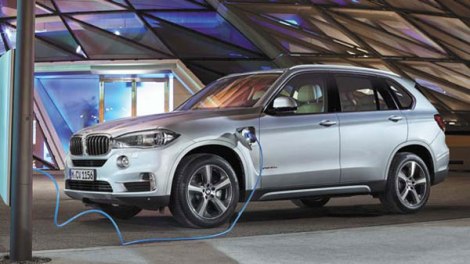
If your journeys tend to be small, then BMW have just launched a plug-in variant of the X5 to compete with similar engines in rivals. The 40e actually only has a 2.0-litre 4-cylinder petrol engine, combined with a small electric motor to create a maximum of 245hp and a 0-60mph time of 6.8 seconds.
As I said, most UK buyers will just stick with one of the diesels, but it’s always useful to look at your journeys and weigh up which options would benefit you the most.
Costs
Buying and running a luxury SUV used to be a very expensive experience, but the X5 is one of a new breed that is surprisingly inexpensive to run, albeit costlier to buy in the first place.
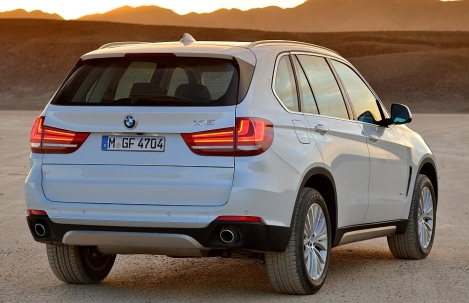
In terms of fuel consumption, the most efficient is the sDrive 25d, which should return up to 53mpg, although adding xDrive to the mix results in a still impressive 50mpg. Both the 30d and 40d return an official 47mpg, whilst the powerful M50d musters an impressive 42mpg.
Petrol engines are understandably less impressive, though 29mpg from 50i is good. Even the X5 M should return 25mpg, but not if you utilise all of that 575hp on a regular basis. The plug-in 40e’s can supposedly return a combined 85.6mpg, but bear in mind that’s if you use it often in electric mode…the e-range of 19 miles is still handy though if you have a short commute!
It’s worth mentioning that it will be very difficult to match any of these official figures, but BMW’s engines tend to be some of the most economical around, and the diesels should return between 35-45mpg very easily if you drive sensibly. It might be tricky to get over 20mpg in the V8 petrols if your commute is mostly town based, but then there is always the 40e for that.

Prices have risen quite sharply, but it’s possible to get into an X5 for £44,280, but adding xDrive costs around £2,500, and the popular M-Sport package is a £3,200-ish option on top of that. If you’d rather have a meatier engine, then it’s just under £3,000 to go from 25d to 30d, and a similar amount to jump from the 30d to the 40d. An M50d is around £8,500 more than the 40d M-Sport, though it does get a few unique additions.
A V8 engined X5 will set you back from £61,185 for the 50i, or a stupendous £90,180 for the X5 M. Greener drivers can bag a 40e from £51,845…or around the same price as an equivalent 40d. Remember that in all X5s there are plenty of options which can raise the price dramatically — it’d be easy to spec up even a 25d to way beyond £60k.
Tax for the X5 varies from £130 up to £505 (for the X5 M), and there are service packages available for the first 5 years of ownership — £525 for all variants apart from the X5 M, which costs £1,050 for the same.
Verdict
What you’re looking at here is, as with so many of its rivals, a pretty perfect package. Correctly optioned, the X5 is a handsome and well equipped luxury SUV, that rides comfortably and handles too well for most customers to enjoy fully. It may be quite expensive to buy, but the good residuals mean that finance deals are not unreasonable and neither is it too expensive to run.

You can get a very well equipped BMW X5 xDrive 30d M-Sport (what a mouthful!) for under £60,000, which isn’t bad value in these eyes…it may well end up being a car I buy in the future!
Pingback: BMW X5 – second roll of the dice | readingandwrighting·
Pingback: BMW X5 (G05) – come fourth | readingandwrighting·